Post-demonetisation, we revisit works by four artists who sought inspiration in monetary value and economic fluctuations
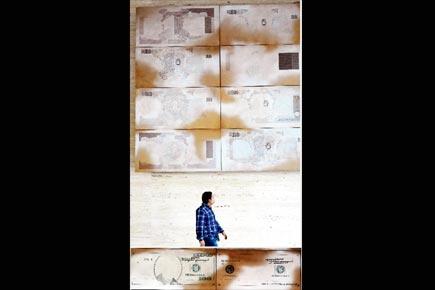
A visitor walks past Justin Ponmany's installation of Rs 100 notes and 100-dollar bills at Lodha Excelus, Worli. Pic/Bipin Kokate
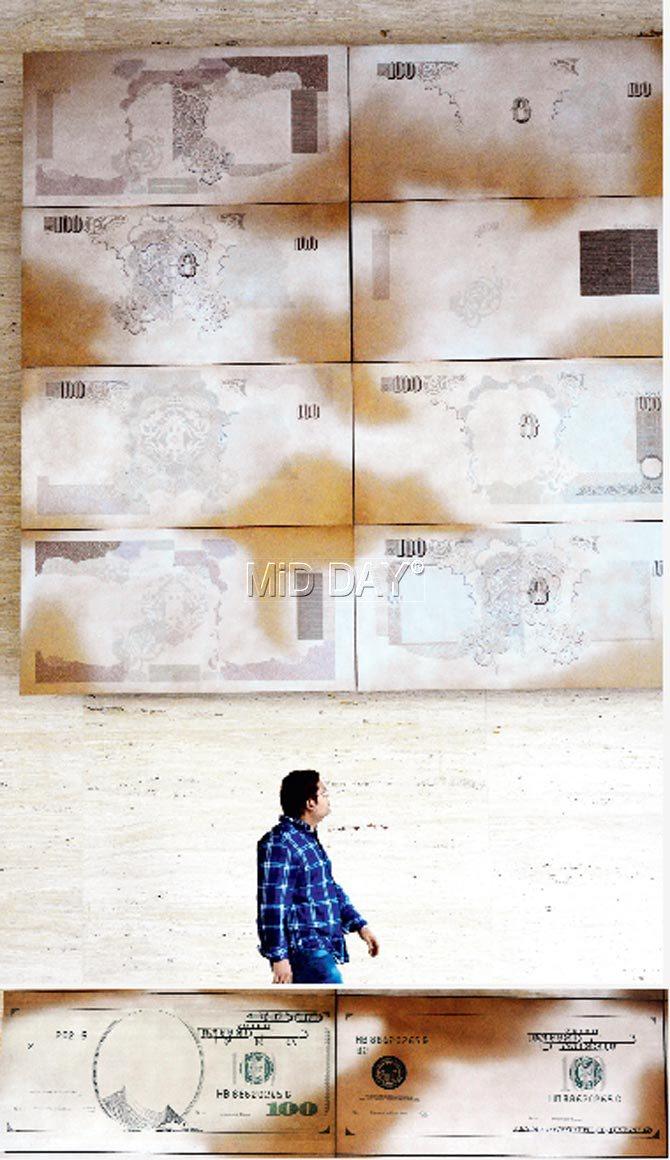
A visitor walks past Justin Ponmany's installation of Rs 100 notes and 100-dollar bills at Lodha Excelus, Worli. Pic/Bipin Kokate
In 1998, Girish Dahiwale presented Toxic Tales: Therapy, his solo exhibition of nine works at the erstwhile Birla Academy of Art and Culture, Worli. Among them was a 5x7 feet painting of the Indian Rs 100 note. However, the famous figure of the Mahatma that adorns Indian currency bills was replaced by a self-portrait; Dahiwale's signature sat in place of the RBI governor's.
ADVERTISEMENT
It was accompanied by a quote from Pearl Jam's song, Garden: I don't question our existence. I just question our modern needs. Curator Niyatee Shinde, who was introduced to Dahiwale by Akbar Padamsee, says that manipulating the legal tender was his method of commenting on the social and ideological world of the moneyed. "Girish came from far out Vasai and, when he stepped into the world of art, he began engaging with the upper middle class. By translating his own emotions into the rupee note, he was turning all known social and political hierarchies on their heads," says Shinde, who was the then director of the Birla Academy.
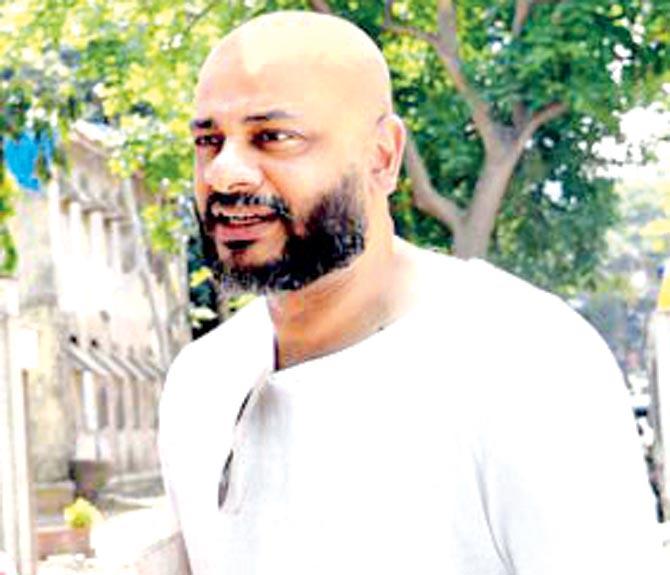
Justin Ponmany
Dahiwale, who sadly committed suicide that year at the age of 25, may have certainly found the present economic unrest, prompted by the demonetisation announcement earlier this month, of particular interest. It is hard to say if a switch of character in currency notes, such as what Dahiwale did artistically then, will be safe from the wrath of political bodies now, however.
Currency inspired note art
The 2000s were when it all began — with globalisation and the recession — when select Indian artists drew from monetary themes; with demonetisation and the hit it has had on businesses and lives, it looks like the artistic concerns of the last decade are far from over.
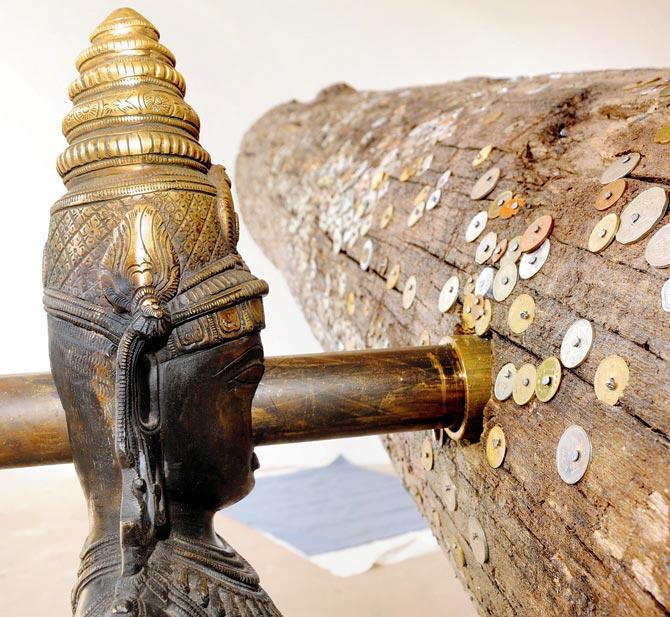
LN Tallur's Chromatophobia (2010) allowed visitors to nail a coin into a log. Pic/Chemouldâu00c2u0080u00c2u0088Prescottâu00c2u0080u00c2u0088Road
Justin Ponmany, an intermedia artist and Dahiwale's contemporary, says that currency has paradoxical qualities. "A currency bill is meant to win the faith of the public in the value that it asserts. This is calibrated with deep thought and planning so that finally when you hold it in your hand it is meant to be reassuring," he says. "But, currency is also subject to extreme volatility and that's what we are seeing now as well," he continues.
In 2011, Ponmany was commissioned by curator and gallerist Dr Arshiya Lokhandwala to create an installation that used elements of the Rs 100 note and the 100-dollar bill. It is housed fittingly in the financial block of Lodha Excelus, in Apollo Mills, Worli, commenting on changing economies and the currency index.
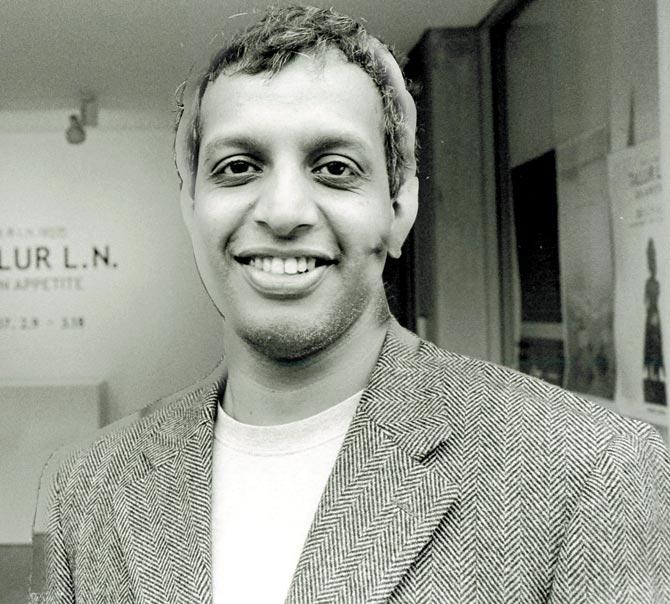
LN Tallur
Lokhandwala, who has curated an ongoing exhibition at Gallery Odyssey surrounding the gift economy, says that this and Ponmany's other works that use holograms comment on high-capitalism. "The site on which Ponmany's installation is situated draws attention to re-appropriation and exchange value," she says. Ponmany says that rather than approach the currency note as a whole, he would rather dig beneath the surface and strip it down to its various components that give it 'value'.
Stability and destabilising
Related to the discomfort and instability that money can give rise to is LN Tallur's Chromatophobia, made in 2010 and which subsequently travelled to eight biennales. It was made a little after the recession hit and at a time when Tallur was interested in the concept of money, the objects that represent money and how users interact with it.
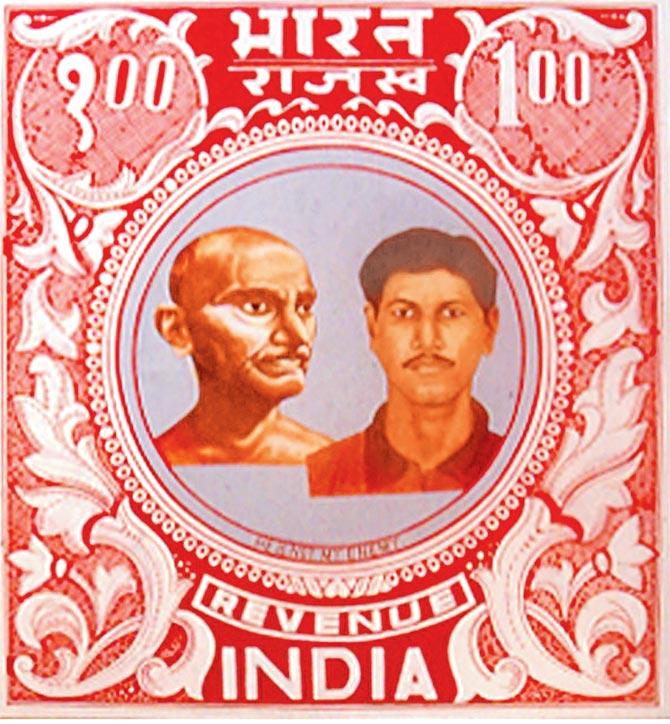
Ashim Purkayastha manipulates stamps in an artistic attempt to destabilise centres of power, as in He Is Not My Enemy. Pic/Sakshiâu00c2u0080u00c2u0088Gallery
The artist, who divides his time between Udupi and Korea, says that Chromatophobia took off from the abnormal fear of money - that it could be mismanaged or could be the root of evil in one's life.
Tallur offered his visitors an interactive installation where people could nail a coin to a log, reminiscent of a house-warming ritual back here in India. "A coin is hammered to the doorway in an attempt to ask Lakshmi — considered 'chanchala', the restless one — to stay. It is also one of the reasons why the seated Lakshmi, rather than the standing one, is preferred as an idol," says Tallur.
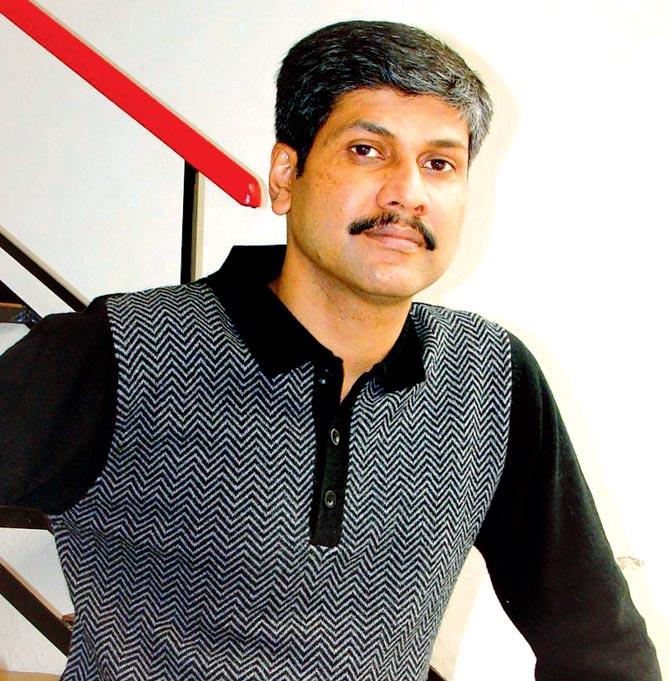
Ashim Purkayastha
While the motif of currency is not one that Tallur's oeuvre is concerned with in totality, another work considers the creation of value — a coin-polishing machine titled Apocalypse. Coins get polished to such an extent that monetary embellishments — numerals and personalities — get erased. "You get "polished" but the greed for shine reduces the coin to a faceless entity and a mere metal piece," he says.
An artist who has consistently used the motif of postage currency in his works is Ashim Purkayastha. At various points in his artistic engagement, the Bengali artist from Assam has manipulated the Indian stamp in an artistic attempt to destabilise centres of power.
"I have seen up close the Armed Forces Special Powers Act gave the military sweeping powers of life and death in disturbed areas, and stamps — so fragile and delicate — have served as my material for commenting on how the state refuses to consider all its citizens," says Purkayastha, who is currently working on a series with 15p stamps depicting farmers.
Purkayastha's interest extends to collecting defaced currencies (which will bring to mind the recent discussion around "Sonam Gupta bewafa hai"). With about 400 notes that bear handwritten comments, jibes and testimonies as well as the odd ornamentation of the Mahatma in ink, Purkayastha says that these attempts to personalise currency can also be read as denying central authority.
Critic and cultural theorist Ranjit Hoskote says that various historical processes have led artists, such as CAMP and RAQS Media Collective, to look at "the spectral circulation of global capital" rather than hard cash. "It is a bizarre idea from the 1970s to think that people are hiding black money under their pillows when in fact money is circulated as part of the speculative economy. As an extension, some artists are now looking at control and surveillance and the invisible circulation of money," he says.
 Subscribe today by clicking the link and stay updated with the latest news!" Click here!
Subscribe today by clicking the link and stay updated with the latest news!" Click here!







